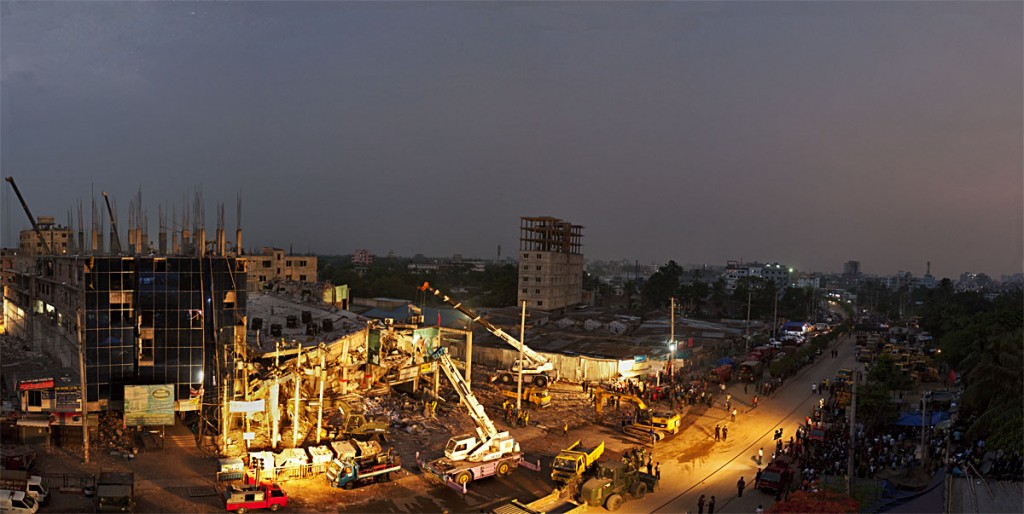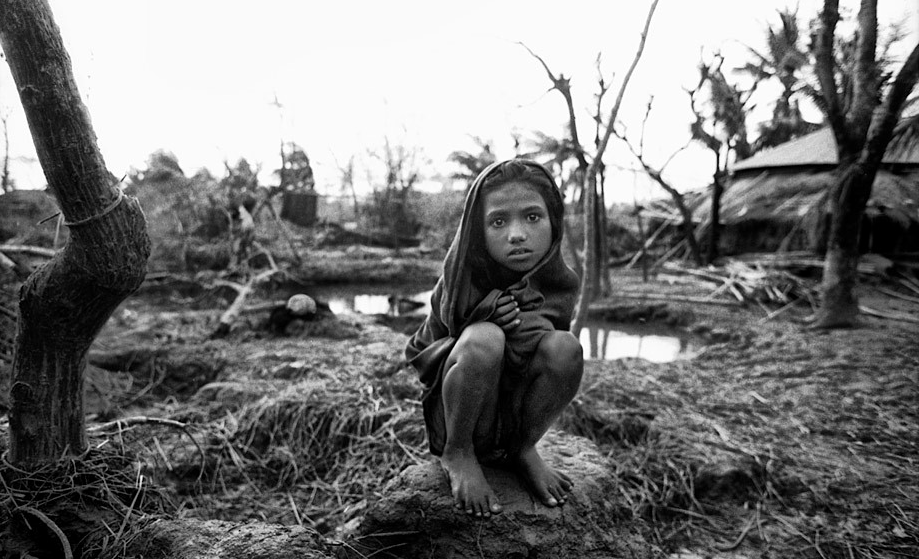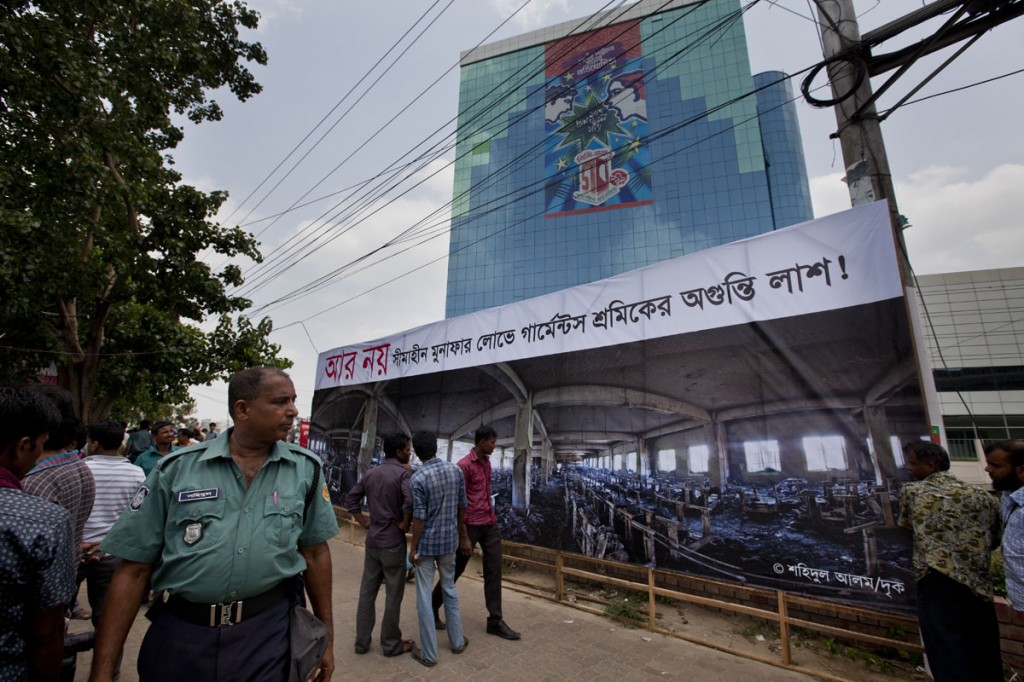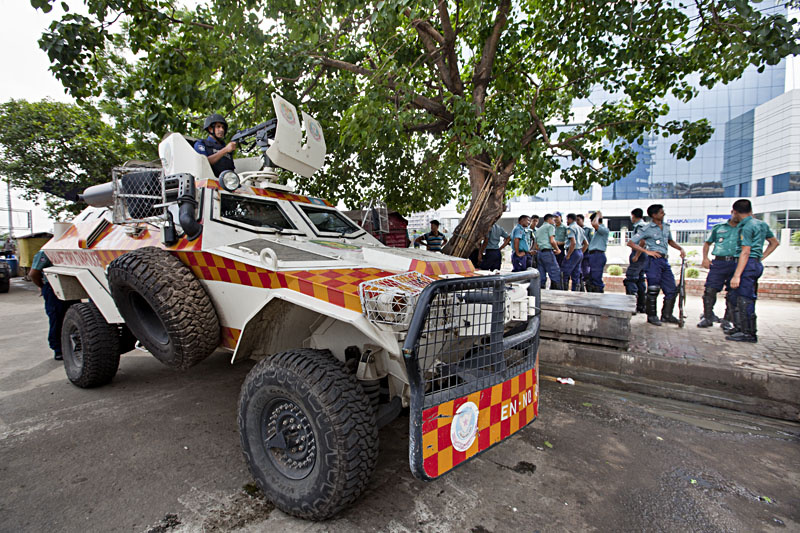They said I would need a mask. ‘The smell’ they said. It was five days into the accident.
But it was no accident. A building built illegally, of faulty construction, showing signs of rupture, had been made their prison. It eventually became their grave. More money needed to be made.

Ironically, that was also the reason the workers worked these long hours, put up with abuse, low pay and possible death. More money needed to be made if they were to survive. The sums were somewhat different. Many had died in the campaign to get minimum wages. Dhaka was an expensive city. Huddled in small rooms. Sharing, toilets, kitchens, beds and nightmares, they barely scraped by. It was still better than being out of work. Better than being abused by masters in well to do homes. Better than selling one’s body. Better perhaps than leaving one’s family for an unknown land and at the mercy of traffickers. They had made a choice, a difficult one.
Living a life absent of all frills. Saving on salaries barely able to feed their families, they put away money for their children’s education. No matter how difficult life was for them. They hoped their children would live better. Even in the unbearable grind of the factory floor, they dared to dream. Until.
They had seen the crack at Rana Plaza and had wanted to flee. ‘Back to work’ had been the order. More money was needed. Lives were expendable.
I was in Arnhem the day it happened. Earlier, we had planned on staging a protest on May Day, demanding justice for the workers killed in the fire at Tazreen Fashions. I was to return on the 29th, put up the exhibit on the 30th, by the roadside in Mohakhali, adjacent to the garment factories. Little did we know, our protest would be so topical! In cynical media terms, we could not have had a better ‘peg’.
I didn’t go for the mask. I’d walked through corpses in Bangladesh during the cyclone in ’91. Seen festering bodies in Sri Lanka during the Tsunami in 2004. Survivors had narrated harrowing tales in Pakistan during the earthquake the year after. I had been to Tazreen Fashions, where I’d seen the desperate marks on the smoke covered walls as workers had tried to flee the raging fire. I’d seen death.

Protected by all the privileges of a middle class upbringing in a woefully classed society, I needed to smell the horror, hear the cries, feel the emptiness. These were the people who earned the dollars that kept me in relative luxury. As for the wealthy, the garment owners – the sweat of workers provided the business class trips, the artwork in their homes, the upper deck swimming pools. This time the workers paid with their blood.
Drik’s driver Joshim parked the car at the petrol pump by Kolkata Boarding. As I walked through the crowd, Younus recognized me and came over to help. He worked in Independent Television and had been there right from the beginning. The military had made access difficult. They explained it was for our own safety and to allow the rescue workers to continue their last attempts to save a life. Younus wasn’t convinced. Owner-interest seemed behind every move the establishment made. Scared that the army demolition attempts would remove the last chance to save lives and obliterate the bodies not yet found, keeping the body count down; fire service workers had apparently lain down on the concrete. “You’ll have to bury us first before you bury them” they had said. The PR campaign kicked in. Military top brass came on TV explaining they would ensure every chance of saving lives was taken. They could work much faster. It was to honour the dead and not damage the corpses that they were delicately removing the concrete.
Spurning the offer of support by other countries had baffled many. People were dying and they were worried about their prestige, or were we facing yet another cover-up? The prime minister’s grandstanding was difficult to stomach. She waxed lyrical about the role her party had played in saving lives. How their actions were so much superior to that of the previous regime. It was election year after all. That four floors of the fated building, owned by her party stalwart, had been allowed to be built illegally, flouting regulations; that an MP of her party had aided the attempted escape of the owner; that Rana’s most recent annual income tax had been a paltry 650 euros; were conveniently left out in her speeches. I wonder how the families felt as they watched the swearing in of the new speaker, while the nation was in mourning. The leader of the opposition wasted little time herself. 900 bodies have been smuggled out, she said, providing no shred of evidence. It was election year for her too. Between the two prime ministers, not a single owner had ever been convicted or punished. BGMEA (Bangladesh Garments Manufacturers Association), was much too powerful.
Younus took me across the road to the buildings where the media was positioned. I had seen their vans with the satellite dishes as we had walked to the site earlier. The building I wanted to climb was occupied by the military, and while I was able to climb the stairs to the top floor, the gate to the rooftop was locked. No media was allowed access. Mr. Jalil, who was in charge, had strict orders. Dealing with people is a journalist’s most important skill. My grey beard helped. Bangladeshi cultural deference towards age applied even to the military. “Only five minutes murubbi (elderly one), Mr. Jalil reminded me.”
While I stood at the rooftop trying to take in the enormity of the situation, Younus told me of the seven cars belonging to Sohel Rana (the owner) that he had seen in the basement. While two were damaged, the other five were intact. “One of them would have cost ak koti taka (ten million Taka, about 100, 000 euros)” he told me. I knew of garment owners with cars worth several times as much. This was believable.
I took pictures hurriedly, conscious of my limited time. The sun had set. The ruins, lit up by mercury lamps, glowed in the night. The sky occasionally lit up due to lightning, lazy arcs stretching across the carcass of the crumpled building. The slow rumble wafted across the broken concrete. Even the sky was weeping.
Mohammad Ferdous, a volunteer rescue worker caught up with me as I prepared to leave. I tried a quick live stream on Bambuser, but the connectivity was poor and the line kept breaking, so the video recording on my Samsung Galaxy had to do. Ferdous talked of the need for heavy machinery, so the collapsing roof could be held up, allowing rescuers to work underneath. He talked of Shahana, the woman he’d found trapped in the concrete. He had sawed off her arm with a hacksaw. He broke down as he recalled her crying out “bhaiya, amare prithibi ta arekbar dekhte dien” (brother, let me see the world just one more time). Three people he had taken to the hospital had died upon arrival. He talked of another man who had tapped on the wall to tell him there were 15 or more people trapped inside. He had poured water through a hole, the living licked the liquid as it trickled over corpses. He didn’t know if they survived.
For Sohel Rana, Delower Hossain (owner of Tazreen Fashions) and the other owners of BGMEA, the only thing that mattered was how much money was to be made. They talked of how the media attention had affected the image of Bangladesh. Of how work stoppage was costing dearly. After the Tazreen fire, BGMEA had asked the government to pay the compensation. Our attempted protest at Mohakhali was skittled. An army officer refused permission. We relocated to Karwan Bazaar, in front of the BGMEA head office. The swank glassed exterior of the building, rose up majestically from the lake. A bridge linked it to the main road. Two previous prime ministers had allowed the illegal construction to stand. The high court had ruled that the building be taken down, but BGMEA had appealed. They had good lawyers.

At 8:30 in the morning, when we arrived, the police were already positioned and in full force. There were 42 then, men and women. Armed. Then reinforces came, along with armoured vehicles with machine guns. The photograph we wanted to put up and the plays we were to enact must have amounted to an act of war. It was war. A class war that ensured that peasants, migrant workers and garment workers of our land remained exploitable. The BGMEA was an owner’s association, but trade unions were banned. Flouting our constitution, BGMEA had lobbied for, and obtained, reduced maternity leave for garment workers. It was to contain population growth, they had explained.

A segment of the armed police took position on the bridge leading to the BGMEA building. The others guarded the road leading to the bridge. The armoured vehicle and the other police trucks were positioned on the main road. The wind was too strong for our print and tore it off the rickety wooden frame we had just built. So we attached the print at the top, and just let it blow in the wind. It fluttered in the breeze, occasionally settling down to give us a full view. Our 30 foot print we had thought was big, until we saw the huge colourful banner on the BGMEA building. It was promoting a song contest. A tiny banner, cheaply made, expressing the sorrow the owner’s felt at the loss of lives and placed much lower down, was barely visible.
Ferdous, the volunteer rescue worker who had helped me yesterday rang reminding me what still needed to be done. My mind went back to the previous day, to when we had left. My minders had been getting agitated, and we had left quickly. As we neared Rana Plaza, we heard shouts “bacha paowa gase” (they’ve found a kid alive). We had all rushed to the ambulance nearby. I had looked out for Ferdous as the ambulance sped away, but he was nowhere to be found. He answered our call from inside the ambulance. He had clambered aboard. There was another life to be saved.
Shahidul Alam
Dhaka. 1st May. 2013

The fustration you feel when you know you have zero power to bring down bangladeshi corruption…
Problem is not just the owners of the garments factories, it’s the pompous little lads and lasses of upper middle class families fuelling this greed and disregard for human life. But Who am I to say any this? Afterall my parents would rather give me a wrist watch worth a year’s salary of the average Bangladeshi than give half the monetary value to a starving family. Shame on us.